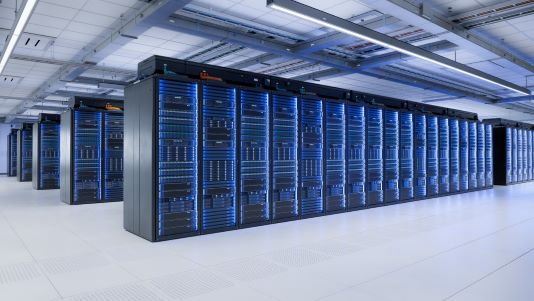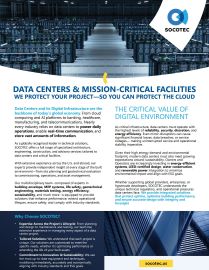Author

The global data center expansion is one of the most exciting infrastructure opportunities of our generation. Fueled by cloud computing, AI, and the digital economy, demand is rising at unprecedented speed. But rapid growth brings complexity. The key to turning opportunity into success lies in effective coordination between owners, developers, contractors, and local stakeholders.
The industry can embrace that complexity, build smarter, and unlock long-term value. With the right strategies, the data center boom will set the standard for how large-scale infrastructure can be delivered with speed, quality, and foresight.
The role of data centers in supporting daily life is growing rapidly. They enable everything from banking transactions to remote classrooms to streaming entertainment. The pressing issue is no longer demand, but execution: the speed, efficiency, and consistency with which new capacity can be built.




The delivery of data centers is not only a technical or a logistical challenge, it is a coordination challenge. Three key players approach projects with conflicting assumptions, incentives, and tolerances for risk and at the same time each one brings its own unique strengths.
Any disconnect between these parties can cause misaligned expectations, increasing project risk and limiting scalability. However, when these groups have the right support and align early and clearly, the result is accelerated delivery, optimized costs, and facilities built for resilience. Coordination transforms risk into opportunity.



The industry talks about megawatts too casually and abstractly. In reality, grid capacity is a critical bottleneck. Regional power availability and cooling strategies vary dramatically, and environmental or permitting constraints are often underestimated. Local communities also raise concerns over noise, water use, and land impact, creating potentially significant pushback.
Specialized construction skills are not universally available across every region. Data centers demand precise installations and disciplined scheduling. Regional differences in prevailing wages, labor agreements, and workforce size mean that projects cannot simply be replicated from one state to another without adaptation.
Yes, demand for power, cooling, and skilled labor is rising fast, but rather than barriers, these are catalysts for innovation. We see advances in renewable integration, creative cooling strategies, and workforce training initiatives reshaping the industry. Regions once overlooked are becoming new hubs of opportunity, supported by fresh investment and local expertise.
History offers examples of rapid, large-scale infrastructure success:
WWII shipbuilding after Pearl Harbor
The Apollo Program integrating R&D and manufacturing
COVID-19 vaccination rollout logistics
Each case succeeded through central coordination, clear accountability, and a unified objective.
The data center boom represents the beginning of a generational infrastructure shift. To meet this moment, the industry must move beyond siloed interests toward coordinated action:
The winners in this land grab will not simply be those who build fastest, but those who build with foresight, coordination, and trust.
The industry talks about megawatts too casually and abstractly. In reality, grid capacity is a critical bottleneck. Regional power availability and cooling strategies vary dramatically, and environmental or permitting constraints are often underestimated. Local communities also raise concerns over noise, water use, and land impact, creating potentially significant pushback.
Specialized construction skills are not universally available across every region. Data centers demand precise installations and disciplined scheduling. Regional differences in prevailing wages, labor agreements, and workforce size mean that projects cannot simply be replicated from one state to another without adaptation.
Yes, demand for power, cooling, and skilled labor is rising fast, but rather than barriers, these are catalysts for innovation. We see advances in renewable integration, creative cooling strategies, and workforce training initiatives reshaping the industry. Regions once overlooked are becoming new hubs of opportunity, supported by fresh investment and local expertise.
History offers examples of rapid, large-scale infrastructure success:
WWII shipbuilding after Pearl Harbor
The Apollo Program integrating R&D and manufacturing
COVID-19 vaccination rollout logistics
Each case succeeded through central coordination, clear accountability, and a unified objective.
The data center boom represents the beginning of a generational infrastructure shift. To meet this moment, the industry must move beyond siloed interests toward coordinated action:
The winners in this land grab will not simply be those who build fastest, but those who build with foresight, coordination, and trust.
The data centers industry is experiencing unprecedented growth, driven by the insatiable demand for cloud services, AI, and digital infrastructure. While the opportunity feels inevitable, readiness lags far behind. The rapid scale-up of construction, power grid access, and skilled labor availability has exposed a fundamental coordination challenge across owners, developers, and contractors. Without better alignment, the industry risks stalled projects, spiraling costs, and missed opportunities.
At this age, AI can enhance procurement forecasting, risk tracking, and commissioning checklists. But AI cannot resolve misaligned incentives, negotiate permits, or rewire power grids. Nor can it compensate for a project culture resistant to transparency and collaboration. Technology alone is not a substitute for human coordination and specialized technical expertise.
At SOCOTEC, we help bridge the gap between stakeholders, aligning scope and expectations to reduce risk and keep projects moving. Because in this generational infrastructure shift, success won’t be about building fastest—it will be about building smarter, together.
From the earliest planning conversations to post-occupancy operations and even end-of-life transitions, data centers demand precision, foresight, and adaptability. SOCOTEC brings together multidisciplinary expertise spanning
We ensure facilities perform as intended, remain resilient, and stand ready for the future.
With experience on more than 100 data centers across 20+ states and internationally, our team understands the technical, logistical, and operational factors that define successful projects. Whether it’s aligning stakeholders during pre-planning, ensuring compliance during design and construction, or optimizing performance over decades of operation, SOCOTEC provides clarity and confidence at every step.
Data centers are the backbone of the digital economy. We help make sure they’re built to last.
“The future of infrastructure is being written in data centers.”



Speak with one of our data centers experts to explore solutions, coordination strategies, and best practices for building resilient, high-performance facilities.




Get the latest updates about SOCOTEC, subscribe to our newsletter!